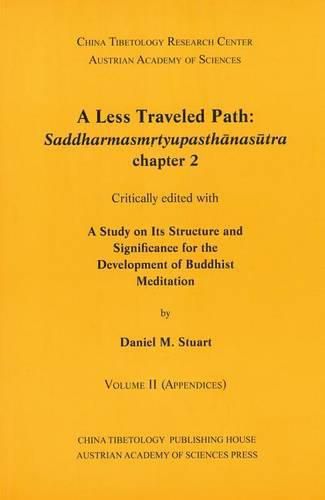Readings Newsletter
Become a Readings Member to make your shopping experience even easier.
Sign in or sign up for free!
You’re not far away from qualifying for FREE standard shipping within Australia
You’ve qualified for FREE standard shipping within Australia
The cart is loading…






A Less Traveled Path brings to light unique textual evidence of an important transitional moment in Indian Buddhism. This book includes a critical edition and translation of the second chapter of a third- or fourth-century Buddhist Sanskrit text, the Saddharmasmrtyupasthanasutra, which sheds light on the so-called Middle Period of Indian Buddhism. In his introduction, Stuart argues that meditative practice, rhetoric, and philosophy were intimately tied to one another when the Saddharmasmrtyupasthanasutra was redacted, and that it serves as an important historical touchstone for understanding the development of Buddhist mind-centered metaphysics. This development is historically significant because it marks a major shift in Indian Buddhist religious practice, which conditioned the emergence of fully developed Mahayana path schemes and power-oriented tantric ritual traditions in the centuries that followed the text’s compilation.
$9.00 standard shipping within Australia
FREE standard shipping within Australia for orders over $100.00
Express & International shipping calculated at checkout
A Less Traveled Path brings to light unique textual evidence of an important transitional moment in Indian Buddhism. This book includes a critical edition and translation of the second chapter of a third- or fourth-century Buddhist Sanskrit text, the Saddharmasmrtyupasthanasutra, which sheds light on the so-called Middle Period of Indian Buddhism. In his introduction, Stuart argues that meditative practice, rhetoric, and philosophy were intimately tied to one another when the Saddharmasmrtyupasthanasutra was redacted, and that it serves as an important historical touchstone for understanding the development of Buddhist mind-centered metaphysics. This development is historically significant because it marks a major shift in Indian Buddhist religious practice, which conditioned the emergence of fully developed Mahayana path schemes and power-oriented tantric ritual traditions in the centuries that followed the text’s compilation.